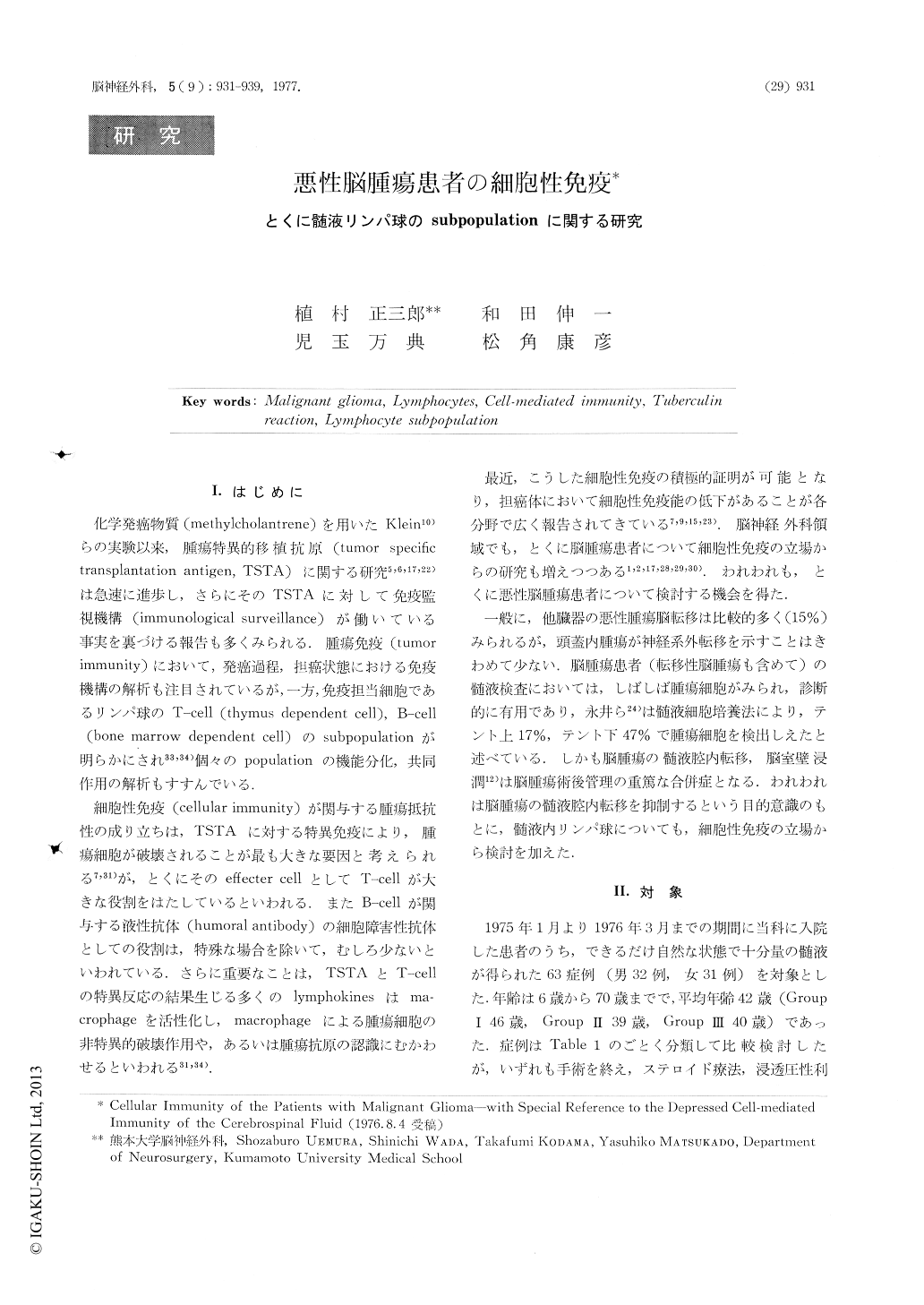Japanese
English
- 有料閲覧
- Abstract 文献概要
- 1ページ目 Look Inside
Ⅰ.はじめに
化学発癌物質(methylcholantrene)を用いたKlein10)らの実験以来,腫瘍特異的移植抗原(tumor specific transplantation antigen, TSTA)に関する研究5,6,17,22)は急速に進歩し,さらにそのTSTAに対して免疫監視機構(immunological surveillance)が働いている事実を裏づける報告も多くみられる.腫瘍免疫(tumor immunity)において,発癌過程,担癌状態における免疫機構の解析も注目されているが,一方,免疫担当細胞であるリンパ球のT-cell(thymus dependent cell),B-cell(bone marrow dependent cell)のsubpopulationが明らかにされ33,34)個々のpopulationの機能分化,共同作用の解析もすすんでいる.
細胞性免疫(cellular immunity)が関与する腫瘍抵抗性の成り立ちは,TSTAに対する特異免疫により,腫瘍細胞が破壊されることが最も大きな要因と考えられる7,31)が,とくにそのeffecter cellとしてT-cellが大きな役割をはたしているといわれる.またB-cellが関与する液性抗体(humoral antibody)の細胞障害性抗体としての役割は,特殊な場合を除いて,むしろ少ないといわれている.
Lymphocytes of the peripheral blood and cerebrospinal fluid were examined and the subpopulation of T-cell and B-cell was studied in 27 patients with malignant glioma. The results were compared with that obtained from the other types of brain tumor (18 cases) and from the normal control (17 cases). Utilizing sheep red blood cell T-cell was identified by spontaneous rosette formation (E rosette) and B-cell was determined by complete binding rosette formation (EAC rosette).

Copyright © 1977, Igaku-Shoin Ltd. All rights reserved.


